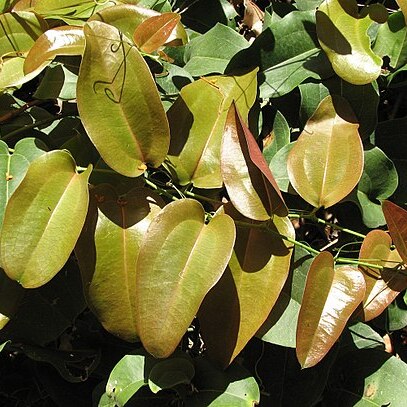A climber which scrambles widely. It can grow to many metres high. The stems are wiry and 0.5 cm across. They have some sharp prickly thorns. Plants are separately male and female. The leaves are alternate and smooth. They are broadly oval and leathery. The leaf blade is 5-14.5 cm long by 3.2-9.5 cm wide. Leaves are dark green above and paler underneath. There are 3-5 veins running along the leaf. The flowers are small and cream. They are about 0.3-0.6 cm across. Several occur together in the axils of leaves. The fruit is a smooth berry. It is 0.8-1 cm across. They are purple to black when ripe. There are 1-2 seeds inside.

